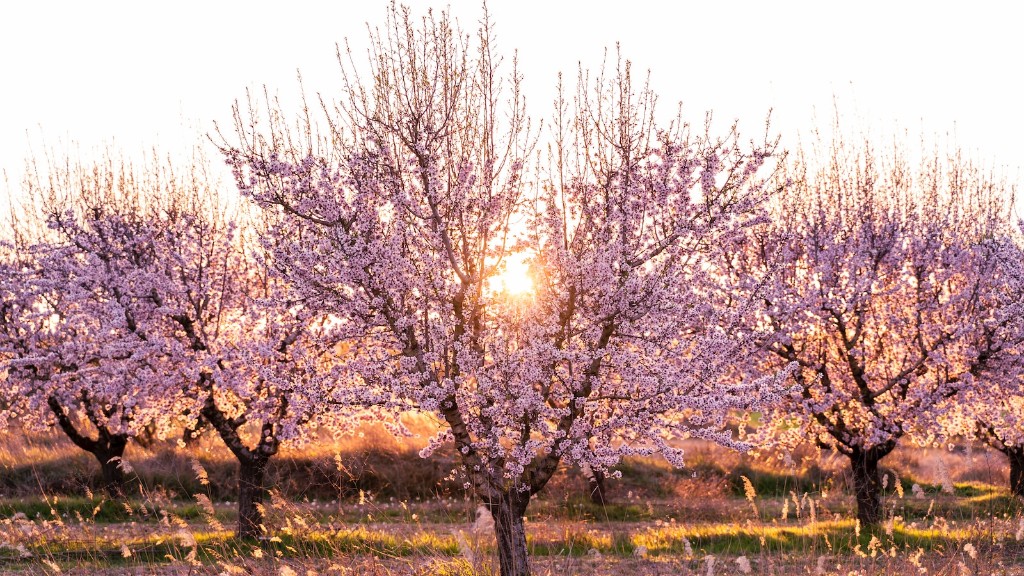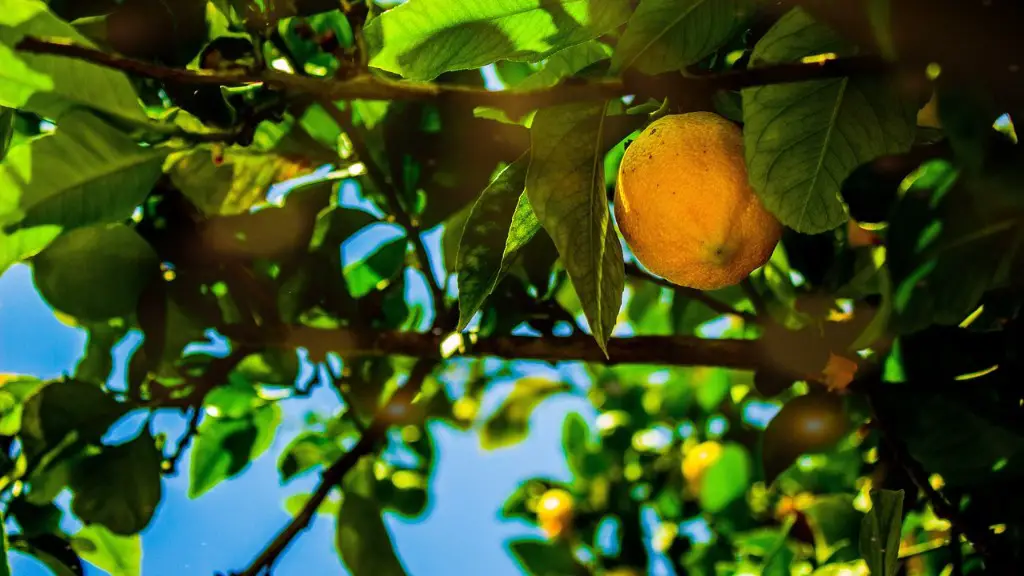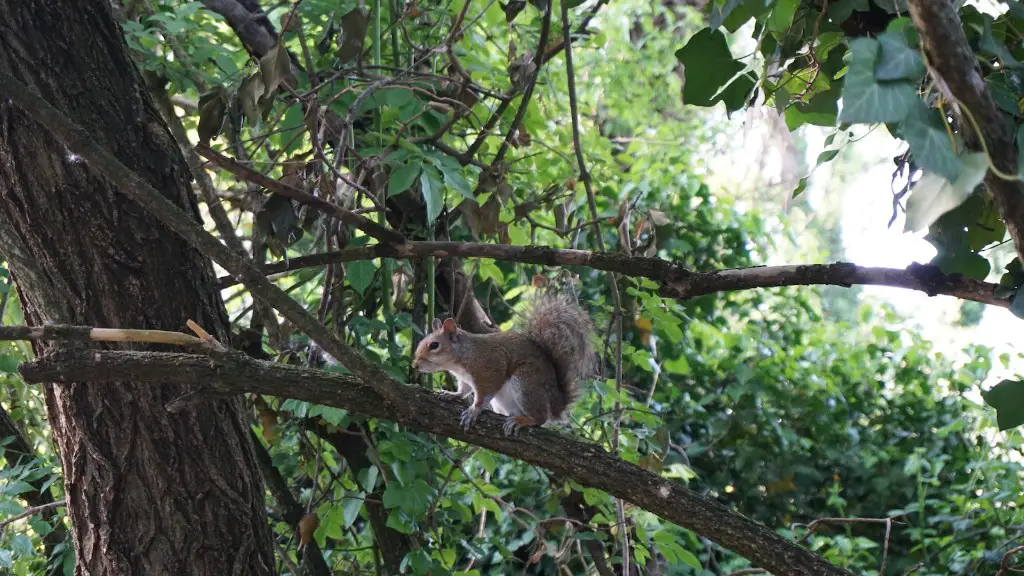Planting an apple tree at home is an exciting project, but it involves some technical knowledge and effort. The first step in planting an apple tree at home is to choose the right location. It’s important to pick a place with sufficient space for the tree to grow, as well as with adequate sunlight exposure. A south-facing site is best for optimal sunlight exposure. Apple trees also need well-drained soil. If your soil is not well drained, consider creating raised beds or hills that will allow excess water to run off.
Once you’ve chosen the location, it’s time to purchase and prepare the tree. Select a grafted apple tree with at least two buds on each graft. Prepare a wide hole for the tree, making sure it’s twice as wide as the root-ball and as deep as the root-ball, so the roots of the tree can spread out and grow. Next, mix some organic matter (peat moss, compost, etc.) in with the soil around the edges of the hole. Finally, carefully set the tree in the hole, fill in the soil and lightly compact the soil around the base of the tree.
Before planting the tree, take some time to prune away any dead, weak or diseased branches. You also want to remove any suckers (those tend to take energy away from the tree) and prune the branches so they grow larger. Once the tree has been pruned, give the root-ball a good watering and mulch the area around the tree to protect it from the elements.
Now that your apple tree is planted, it’s important to provide adequate water and nutrients for the tree. While newly planted trees don’t need much fertilizer, you may want to add a slow-release nitrogen fertilizer that will break down over time and provide nutrients to the tree. You also want to water your tree regularly, especially during the dry season. Apple trees need about one inch of water per week, so it’s important to check the moisture level of the soil frequently.
Overview
In summary, planting an apple tree at home can be a rewarding project, so long as you take the time to locate the right location, purchase and prepare the tree, and prune and mulch it properly. It’s also important to provide adequate water and nutrients to ensure your tree grows strong and healthy.
Fertilizing
Once your apple tree is established, fertilizing your tree is an essential part of caring for it. Depending on the type of soil you have, you may want to add a slow-release or a liquid fertilizer to the soil around your tree. Be sure to follow the manufacturer’s instructions and only use the recommended amount of fertilizer. Too much fertilizer can damage your tree, so it’s important to be careful.
Also, be sure to check the pH level of your soil occasionally. Different apple trees prefer different soil pH levels, so make sure your pH is within the ideal range for your particular tree. If not, you can make adjustments to the soil pH with lime or sulfur.
Finally, you’ll want to check the nitrogen, phosphorous and potassium levels in your soil to ensure they’re all balanced. You can do this by getting your soil tested or using a store-bought test kit.
Pest Control
In addition to providing the tree with adequate water and fertilizer, regular pest control is necessary to ensure your tree is healthy. Some pests to watch out for are aphids, scale, spider mites and weevils. All of these pests can be controlled with natural or chemical treatments, so it’s important to be proactive in monitoring your tree for signs of infestation.
At the same time, you want to be mindful of beneficial insects such as ladybugs and praying mantises, as these can help keep pests away from your tree. Make sure to avoid spraying insecticides near beneficial insects, as this will disrupt the balance of your garden.
Pruning
Finally, regular pruning is important to keep your apple tree healthy and safe. Most apple trees need to be pruned annually in the spring, as this will not only help it maintain its shape, but it will also promote strong growth. Make sure to remove any dead, diseased, or weak branches and prune any extravagant branches.
It’s also important to thin out branches, as overcrowding can cause the tree to produce smaller fruit. After pruning, make sure to apply a sealer to the pruning holes to prevent infection or disease.
Harvesting
Waiting for the apples to ripen can be a fun and exciting time. In some areas, apples may be ready to pick around late August or September, but this will depend on the variety of your tree and the climate in which you live.
When the apple is ripe, it should easily come off in your hand when you give it a gentle twist. Be sure to use only clean tools to pick the apples, as dirty tools can damage your tree.
At the same time, it’s important to not over harvest, as this can reduce the number of apples your tree will produce next year. If you’re not sure when to stop harvesting, a good rule of thumb is to leave at least one apple per branch on your tree.
Storage
Finally, once you’ve harvested your apples, it’s important to store them properly to ensure they last as long as possible. Apples generally last longer when kept in cool, dry conditions. Consider wrapping them in newspaper and placing them in a cardboard box in the fridge, as this can help them stay fresh for weeks. However, it’s important to not overstuff the box, and to make sure to check the apples regularly for any that may have gone rotten.
If you don’t plan to eat the apples right away, you can also consider freezing them or drying them for long-term storage. Frozen apples can last up to one year and dried apples can last up to two years, so they make a great way to enjoy the fruits of your labour long after the harvest is over.




